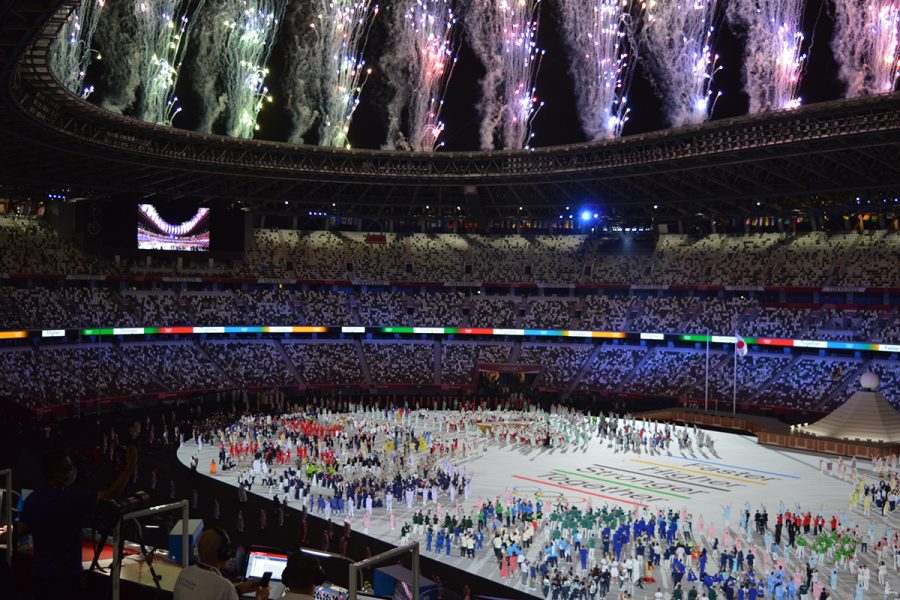With protests outside the National Stadium often audible and COVID-19 cases surging in Japan, the Tokyo 2020 Olympic Games Opening Ceremony was mired in uncertainty and controversy. Many Japanese people were worried about inviting in the world when most of the capital was still in lockdown, and a stadium of empty seats made creating a feeling of connection near impossible.
Every ceremony comes with a unique set of obstacles. The London 2012 Summer Olympics required managing the sheer volume of people involved and the 2018 Winter Olympics in PyeongChang brought freezing conditions that made rehearsals difficult. However, creating an Opening Ceremony amid a global pandemic provided a whole new set of challenges. There is no precedent, no script to follow for trying to bring people together during a health crisis. By building on its lessons from previous Olympic Ceremonies, Wonder Works was able to provide the talented Japanese team with the technical insight and emotional support to create something spectacular, against all odds.
In 2014, when Wonder Works first visited Tokyo, the world was a very different place. Japan was proudly looking forward to holding its first Olympics since 1998 in Nagano, and the teams were coming to terms with the enormity of what lay ahead.
The new stadium was yet to be built so being involved in those initial conversations meant that Wonder Works was able to input on some key design elements. From making entrances wide enough to cater for large numbers of athletes and trucks to enter, to ensuring that the roof had enough loading capacity for lighting and audio, Wonder Works helped the team design a state-of-the-art stadium that would be functional as well as look the part. As Senior Adviser to the Executive Producer, Wonder Works’ Piers Shepperd was responsible for ensuring that the multiple stakeholders understood the major technical requirements and helped steer the production process through a myriad of challenges. Seven more trips to Tokyo followed this initial meeting where Shepperd advised on everything from the redundancy strategy of the hydrogen-fuelled cauldron, to control rooms, rigging positions and replacing the turf on the field of play. Just as important as this technical insight however, was the emotional support that was required in the final few months.
“A lot of people fall into silos under extreme tiredness and pressure. Part of my job is to bring the teams together in the same room and encourage people to talk. Fast-paced communication is the key to solving problems,” Shepperd explained. “At other times people just need to hear you say: ‘you’re doing okay,’ or ‘the fear is quite normal’, and ‘it will all come together brilliantly at the last minute’.”
After seven Olympic Ceremonies, Shepperd is well placed to provide this level of mentoring and, despite very difficult circumstances, the team managed to stage an incredible event for a global TV audience. “Ceremonies have a unique way of uniting people,” he concluded. “The Tokyo Olympics, despite being mired in controversy, turned out to be a huge inspiration to athletes, spectators and the world just when we needed it the most.”
This article originally appeared in issue #266 of TPi, which you can read here.


